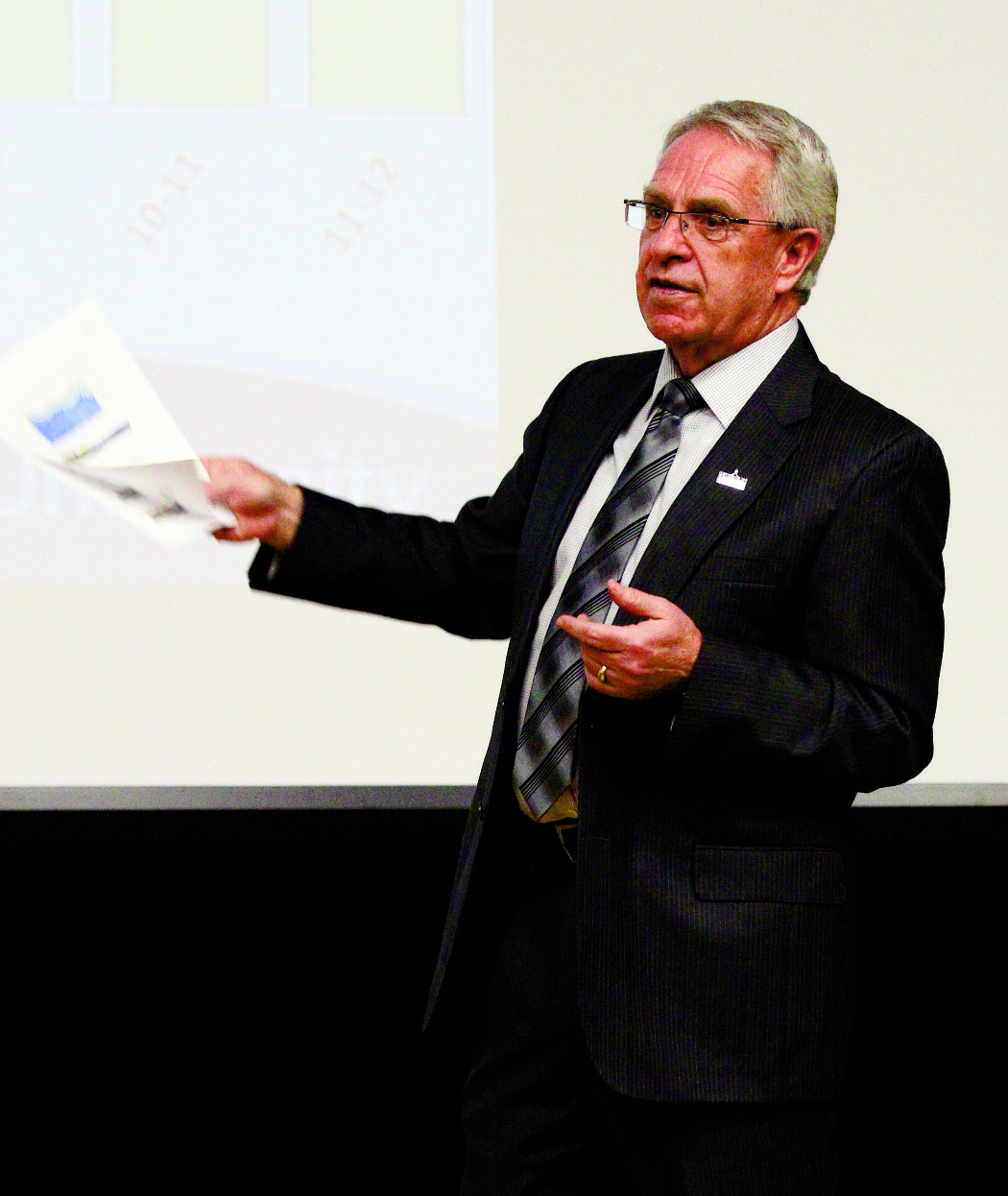USU releases sexual assault review, answers media scrutiny
As a result of an internal review Utah State University began to conduct in late July, the university publicly released a list of eight recommendations and review findings on Aug. 24 that aim to improve the “response and prevention of sexual assault” on the university’s campus.
Namely, the recommendations call for the creation of a new permanent coordinating committee that will be charged to “ensure effective implementation of investigation and adjudication processes, training for faculty and staff, education of students, prevention efforts, and other related Title IX compliance efforts.”
The recommendations also detail efforts to expand avenues for USU students in the areas of sexual assault training and education, integrate Maxient software — which will streamline record keeping of sexual assault reports between university offices — and conduct campus climate surveys to create discussion about the university’s endeavors to handle and eliminate sexual assault issues on its campus.
Arriving on the tail end of a pair of articles published by The Salt Lake Tribune in July about four off-campus sexual assaults allegedly committed by USU student-athlete Torrey Green, the review and its recommendations provide a response to scrutiny the university faced as a result of the Tribune’s reporting.
Its response was direct.
The review concluded that no individual at the university discouraged the women in the Green sexual assault cases from reporting the assault or pursuing an investigation, no evidence of “university wrongdoing” was hidden or withheld and that the university’s athletics department did not treat Green preferentially.
The Tribune published its initial article about the sexual assault cases on July 21. It recounted the harrowing experiences of four women who alleged they were sexually assaulted by Green, of which three pointedly accused the university and local authorities of doing little to deal with or resolve their individual cases. The article claims the university “never fully investigated the allegations or sanctioned [Green], who has now graduated.”
A subsequent article, published on July 29, announced the university’s review and an additional review that would be conducted by Cache County.
The university published a release on Aug. 9 defending its practices in maintaining the wellbeing of its students.
“Despite numerous media and other allegations to the contrary, I would like to make one thing clear: Utah State University, its administration, and its faculty and staff share an absolute commitment to the well-being of our students. I think I can say unequivocally that in everything we do, we are guided by the principle that student welfare, in all aspects, is, and always will be, our most important mission and concern as a university,” USU president Stan Albrecht wrote in the release.
Albrecht prefaced Wednesday’s release and recommendations by setting change into motion in the way the university handles sexual assault, stating, “I am committed to implementing these recommendations quickly, and I ask our entire campus community to join us in these efforts.”
Executive Director of the Public Relations and Marketing Office Tim Vitale and USU General Consul Mica McKinney, who was responsible for completing the internal review, both emphasize that the university has an ongoing evaluation of the way they handle sexual assault.
The review, they say, was not a singular occurrence. Rather, a supplement to a process that has existed for quite sometime.
“We did a targeted focused look on exactly what was alleged to happen in the media,” Vitale said. “We have taken this issue of sexual assaults seriously and we already had changes in the works that have passed; we’ve been working hard on adapting our sexual assault policies and procedures all along.”
McKinney says the recommendations won’t be the only items the university implements this year regarding its effort to prevent sexual assault and improve reporting processes for survivors.
“While these recommendations came out of the investigations and allegations regarding Torrey Green, [students] will see more changes and proposals coming to the campus community throughout the school year,” McKinney said. “There is more that we can and will be doing.”
Among these changes, McKinney notes, are simplifying and improving sexual assault reporting methods for USU Housing and Residence Life staff and providing mandatory sexual assault reporting training for university staff and faculty.
“We’re trying to refine and give really specific instruction in small doses that’s a helpful reminder,” McKinney said.
As the school year gets underway and majority of the campus population returns, the university has its eyes set toward engaging students through education and garnering student input to make the campus a safer environment.
“I think we are better off today,” McKinney said. “This process doesn’t stop with these recommendations. We are going to be moving forward and continuing to review processes and things we can improve. And an important part of that is engaging the campus. We do need the help of the students and our faculty and staff in getting us where we want to be.”
For more information on sexual assault reporting, survivor resources, sexual assault prevention and general information visit: http://aaeo.usu.edu/htm/sexual-misconduct or http://www.usu.edu/saavi/

